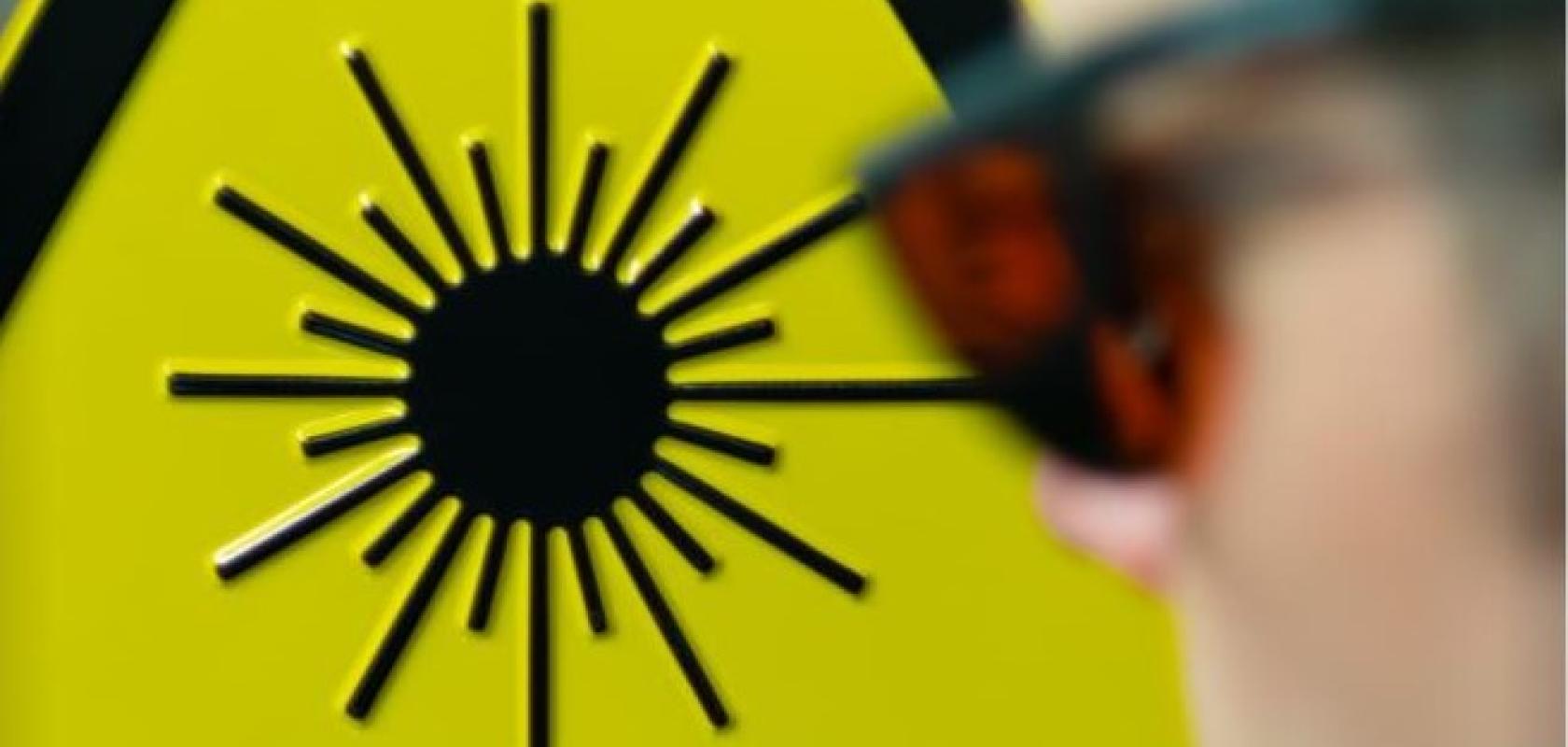An outline of some of the emerging risks when it comes to lasers, and advice on how users can keep themselves safe.
The first laser came into being back in 1960, when American engineer and physicist Theodore H. Maiman, who was working at Hughes Research Laboratories – part of Hughes Aircraft Company – successfully fired up a prototype, based on theoretical work by fellow physicists, Charles Hard Townes and Arthur Leonard Schawlow.
Some six decades later, it’s no secret that lasers have dramatically increased in popularity across research, sciences, medicine and aesthetic treatments, as well as industrial applications. What has been slightly surprising, however, has been the move into the small business and consumer sphere. Recent years have seen an influx of hobbyists flocking to popular consumer websites and resale sites to order laser marking or etching equipment and PPE supplies from popular consumer websites, in order to make personalised products that they can sell.
Preetesh Mistry, sales manager for photonics at Pro-Lite Technology, explains why this is a concern: “People who have worked with lasers throughout university or during research and development or product development work in industry will be clued up to the dangers that they can present. But if consumers, who arguably have less knowledge surrounding lasers, order equipment from these sites, they don’t know where it’s coming from. This is concerning, partly because different countries have different standards, but also because
the documentation may not always have the right information for people within Europe in terms of specifications and safety requirements for them to work out what is legally safe. More worryingly, these users may not understand the potential dangers and how to avoid them.”
Recognising hazards
Such dangers include the potential beam related hazards that can affect the eyes and the skin. The lasers can cause biological damage both, through temperature effects from absorbed energy and also through photochemical reactions, depending on the wavelength of the light and on the tissue being exposed.
For example, when it comes to the eyes, near-ultraviolet wavelengths result in much of the radiation being absorbed in the lens. This means that the effects are delayed and may not occur for some time, in the form of cataracts. With far-ultraviolet (UVB) and far-infrared wavelengths, however, the bulk of the radiation is absorbed in the cornea, which can cause Keratoconjunctivitis if too-high doses are received. Visible and near infrared wavelengths cause most of the radiation to be transmitted to the retina, and there is a risk of flash blindness or even retinal burns.
When it comes to the skin, thermal damage can occur if tissue is heated to the point where proteins become denatured. Photochemical damage is also a risk as light starts a chemical reaction in tissue – this is prevalent with short-wavelength light. Laser pulses shorter than about 1μs, meanwhile, can cause a rapid rise in temperature, resulting in explosive boiling of water. Depending on the wavelength, the beam can penetrate both the epidermis and the dermis. Far and mid-UV can be absorbed by the epidermis, which can cause a sunburn effect. UV exposure is also associated with an increased risk of developing skin cancer and premature ageing.
Regulations and standards
A key development in preventing the above has placed the onerous firmly on the supplier when it comes to PPE equipment. Mistry explains: “There was an update to the original PPE directive a little while ago, which meant that it was superseded by EU regulation 2016/425. One of the key points is that the responsibility for selecting the correct eyewear and other protective equipment is now on the suppliers. In the past, someone could call a supplier and ask for a quote for a particular filter and they wouldn’t necessarily have to ask any questions, but now suppliers have to check, as the experts, to make sure that what they are supplying is actually fit for purpose. This is a really positive move and, of course, it is something that expert and responsible sellers such as Pro-Lite have always done as a matter of course.”
There is also a new standard in the pipeline – 19018 – which will have a more global focus to help ensure that products coming from different markets are subject to the same rigorous requirements. In the meantime, there are a number of things that users and suppliers of lasers can do to ensure that they stay safe and legal. Mistry reveals: “If you’ve been trained and you’re comfortable running the calculations, by all means do so to try and figure out what you think you need. But don’t forget that when speaking to suppliers, like ourselves, that we are the experts. We are also duty-bound to ask for the laser specifications so that we can run our own calculations. Hopefully, nine times out of 10 we will reach the same answer and will be good to go. If there are any questions or discrepancies, we can figure out where that’s come from. I’m a laser safety officer, and I have access to the guys that trained me at Laservision. The best thing to do, if you’re not sure, is just to ask. There’s no such thing as a stupid question when it comes to safety.”
How to stay safe
Another word of advice from Mistry is that, with different laser types, wavelengths and applications, there can be no “one-size-fits-all” when it comes to safety equipment. “You can have two lasers, which, on the face appear the same,” he says. “For example, you can have two 10W Nd:YAG lasers, but depending on the beam size coming out of each, one set of safety glasses might be fine for laser A, but you couldn’t guarantee that they are suitable for laser B without running the calculations. You can have the same power, but if you have it concentrated in a smaller spot, then you have a higher power density or energy density, so you may need to go up a level or two, or maybe even three, on the protection scale.”
A key, according to Mistry, is striking the right balance. He says: “Our filter options cover a nice range of wavelengths, and we always recommend the best suitable protection, covering the minimum LB ratings, but also look at the visual light transmission. There are some filters that are very broadband, which cover a lot of the visible spectrum. But if you’re covering a lot of the visible spectrum, they can be really dark which in a nice, well-lit lab isn’t an issue, but in many applications they’re used in darker environments. If safety tools like glasses feel like they make life difficult, then people are less likely to use them. So, it’s about trying to find that balance of sufficient protection, the best visual transmission, colour recognition, and so on. We’ve got to find that balance between cost, performance and general usability.”
The best piece of advice is to select a trusted supplier with the expertise and experience to assist with your individual requirements. Pro-Lite is the UK distributor for the Laservision range of laser safety products, which include eyewear, but also cabin windows, screening and laser safety partitions. The company also holds regular, online training workshops in general laser safety and in laser safety for designated laser safety officers.
For more detailed information about the latest developments in laser safety and how to go about selecting the right protective equipment for you, download the latest white paper from Pro-Lite.


